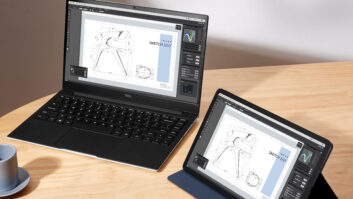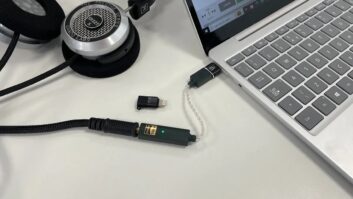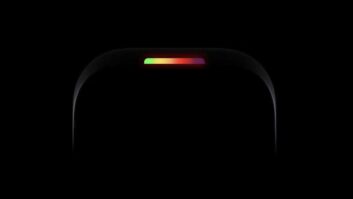New York — Electronic books and e-readers could prove a resilient niche that, for Amazon alone, may generate more than $1.2 billion in retail-level sales by 2010 despite potential competition from smartphones, analysts say.
The e-reader category could even win mass appeal if, as one scenario has it, schools adopt digital readers and digital textbooks in the future, some analysts added.
This week, in fact, one university announced it is in a trial with McGraw-Hill to use eTextbooks on e-readers
and laptops. The trial at Northwest Missouri State University includes the use of 200 Sony e-book Readers and could result in a gradual switch to e-textbooks starting this fall, the school said.
There are also hints that more periodical publishers will make the move to e-readers. Hearst plans to offer an e-reader for its newspaper and magazine titles. The company hopes this will help its bottom line as many of its periodicals continue to lose money due to huge printing and mailing costs, according to press reports.
In particular, the launch of the Amazon Kindle and recent Kindle2 at $359 have boosted the tiny e-reader market in both sales and media hype, and some analysts say sales will keep climbing in the near term.
The most popular e-readers are from Amazon and Sony. Sales of their products are growing in part because e-books are less expensive than most paperback best-sellers; the devices themselves are sleeker and easier to use; and, under the Amazon model, the devices permit over-the-air downloads directly to the units without the need for a PC.
Citi Investment Research analyst Mark Mahaney projects Amazon will sell 3.53 million Kindles in 2010, up from about 500,000 in 2008. Kindle sales, combined with sales of Amazon’s e-books and related accessories, could generate $1.2 billion in sales in 2010 for the online retailer, he said.
For its part, Sony reports sales of 400,000 Sony-branded Readers to date and sales of 4 million e-books from its online store. Unlike the Kindle, the Sony Reader is sold in more than 3,000 storefronts, including Target and
Wal-Mart.
Contrarians abound, however.
Said Yankee Group senior analyst Josh Martin, “I’m not really bullish that this will be a mass-market product.” But if schools adopt the devices, the market could take off, he added.
Stores such as Sixth Avenue Electronics call e-readers a niche product that won’t grow significantly for brick-and-mortar stores, given that most e-readers are sold online, as are e-book sales.
Smartphone threat: Thee-readers also face the competitive threat of big-screen feature-laden smartphones, which have exacted their toll from such portable digital devices as MP3 players and personal navigation devices (PNDs).
Amazon just released a free Kindle application for the iPhone and iPod Touch on the Apple App store, giving users over-the-air access to the Kindle store with more than 240,000 books.
Stanza, another free e-reader download on Apple’s App Store, claims more than 1.4 million unique iPhone and iPod Touch users. The app links users to a store with more than 100,000 books and periodicals.
Another application at the App Store is TextonPhone, which claims 50,000 users.
Gartner analyst Jon Erensen, however, believes the unique e-ink screens required to create low-powered e-readers could protect the dedicated devices from smartphone competition. Book reading drains smartphone batteries too quickly for avid readers, although casual readers might find phones adequate, he said.
Nonetheless, the “books-on-phone” segment continues to grow. In February, Canadian book store Indigo Books & Music launched a “Shortcovers” e-book store whose publications can be displayed on iPhones, BlackBerrys (Storm, Bold and Curve), and Android phones. Users download the Shortcovers application from the iTunes App Store or www.Shortcovers.com. Users then receive over-the-air downloads of books or 99-cent shortcovers, which are excerpts or chapters of a book or other medium. Users can buy more chapters or the whole book. Book prices range typically range from $5 to $17.
The site expects to be compatible with Symbian, Windows Mobile and Brew devices, the Palm Pre and other reading devices in the future.
New models due: E-readers are also continuing to evolve. A new unit due next year from Plastic Logic features a plastic screen made from plastic transistors. It features the width and height of an 8.5-inch by 11-inch sheet of copy paper, is less than a third of an inch thick, and weighs 16 ounces. Its dimensions make it suitable for reading magazines and documents as well as books.
Like the Kindle, the Plastic Logic unit provides over-the-air downloads directly to the unit, although the company is not yet stating whether air time will be included in the price of a download as it is with the Kindle.
The unit also adds the ability to download Word, PowerPoint, email and other documents from a PC for reading on the go. It also offers a soft keyboard (as does the Sony Reader).
Plastic Logic will establish an online store and does not hide its admiration for Amazon. “We’re trying to go for the best store-buying experience, which is Amazon, and we’re trying to emulate that as much as possible. We want to make sure it’s easy,” a spokeswoman said.
Plastic Logic is also working on a color version, which Amazon or Sony don’t offer. The e-reader will be Plastic Logic’s first product, and test trials of the device will begin later this year.
In a related product category, Plustek introduced a scanner that creates do-it-yourself audio books. It’s not an e-reader, but the BookReader V100 lets you scan books, then convert them from text to speech and then to MP3 files for your iPod or other portable. The scanner is being marketed to parents who want to put something other than music on their kids’ iPods. The drawback is that pages must be scanned one at a time. It just began shipping at a suggested retail of $699.













